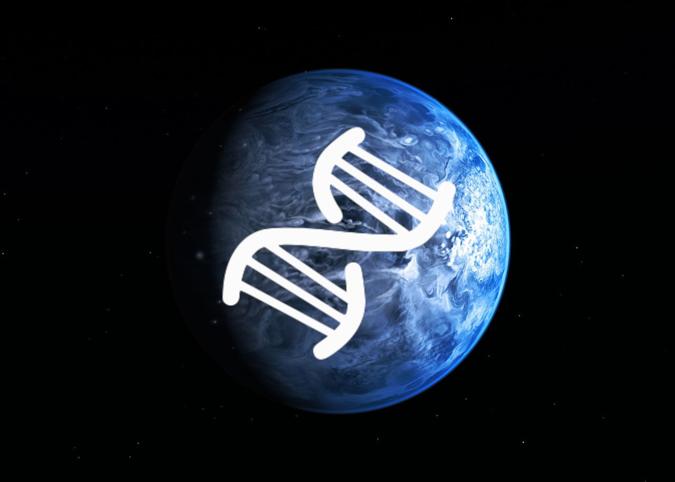| Soundtracks | |
|---|---|
|
(download)
|
(download)
|
Animula, latin for a piece of soul or life, is another sanctuary for life; a planet quite similar to earth, but due toevolution's randomness in establishing traits, is home to creatures awe-inspiringly different superficially, behaviourally and fundamentally to life on earth, down to their very cells. When humans, in in midst of a new foray into space by means of wormhole genesis, discovered this amazing life-filled planet, scientists had at last found conclusive evidence that life did indeed exist out of earth, and not just tiny extremeophilic life; life that was multicellular, sophisticated, intelligent, and all the more astonishing (and massive because of Animula's lower gravity).
Taxonomy is merely a way to organize things, so it is easier to explain and understand the relationships between all life.
Taxonomy
There are two main domains of life: the Parvi (plural), who are simplicell microbes who, despite their tiny size, cover nearly every square metre of Animula, ranging from anaerobic extremophiles living at bottom ocean vents, to photosynthetic cells floating in the atmosphere. The second, more visible domain of life are the Ingenia, complecell multicellular life forms. All Ingenia are highly complex, with different cellular tissues cooperating and being responsible for different functions. Ingenians all descended from photosynthetic single-celled complecells, however many consumer Ingenians have lost this ability, and completely rely on feeding on other life to sustain themselves.
Of the Ingenia there are three major kingdoms: the first are the blue-colored Parenids (which explains the planet's vivid blue color), obligate photosynthesizers; Parenids are immobile and usually fixed, taking root on one spot to absorb sunlight. They are the primary photosythesizers of Animula, and also the main oxygen producers, as they use carbon dioxide in converting sunlight into sugars and return oxygen into the air. The second, smallest kingdom are the Motoplants. An intermediate between the immobile Parenids and the active consumer Exoanimals, Motoplants evolved from Parenids that adapted to feed on other life forms, primarily Parenids, and as such are defined by this feature. Many Motoplants can move from Parenid to Parenid, and use Parenids as their main nutrient source; some subsist on Exoanimals either as decomposers or parasites; but all Motoplants retain at least a vestige of photosynthesis.
The third kingdom is that of the Exoanimals. Exoanimals have lost all pretence of photosynthetic ability. They are obligate herbivores or carnivores, completely relying on other forms of life to sustain their own metabolism. Within the Exoanimals are various Inanians: soft, skeleton-less creatures that in nearly all species lack a brain, though there are some quite intelligent exceptions; Inanians are often microscopic and can be parasitical, or in the ocean there are also vast swarms of visible forms. There are also Duritians, Exoanimals with fairly complex organs and systems with an exoskeleton made of hardened keratinous skin. And last but not least, are the Inframoles (latin for under-structure), soft skinned creatures with a semi-internal segmented and connected row of keratinous bone udnerneath whcih runs along the entire body and which gives rise to limbs and jaws; the Inframoles dominate Animula (from about 3200 myai on). The inframoles are further split into Primiinframoles, primitive, simple creatures most similar to duritians; Opthalmians, diverse aquatic creatures; and Hexapedes, so calleld for having six limbs, and the dominant creatures on land.
[Life]–––[Parvi]
|
'–[Ingena]–––[Parenidia]––––––––[Aquaphyta (Aquatic Parenids)]
| |
| '–––––[Terrastratuphyta (Mats)]
| |
| '–––[Bulbiphyta (Bulbushes, Orbushes)]
| |
| '–[Pullulophyta (Umbrellachutes)]
|
|
|–[Motoplantae]–––––[Kleptomycota (Bulgers, Seabells, Parasites)]
| | |
| | |–[Immanimycota (Ents, Creeps, Drakhins)]
| | |
| | '–[Stratumycota (Carpets)]
| |
| |–––[Perplexumycota (Fanjaws, Autospouts)]
| |
| '–––[Motonatamycota (Motobunches)]
|
'–[Exoanimalia]–––[Inania]–––[Cascuinanizoa]
| |
| '–[Inanizoa]
|
|–[Duritia]
|
'–[Inframolia]–––[Primiinframolezoa]
|
|–[Opthalmianizoa]
|
'–[Hexapedizoa]–––[Primisauroidea]–––[Primisauria]
| |
| '–[Trimalia]
|
'––––––––––––––––[Retroincendoria]
| Animula | ||||||
|---|---|---|---|---|---|---|
| Information | Taxonomy • Exoanimal Biology • Parenid Biology • History of Life | |||||
| Life | ||||||
| Parenidae | Motoplantae | Inania | Duritia | Inframolia | Habitats | |
| Primizoic Era | • Cascuinania | • Primiduritizoa
• Duritiscorpidae |
||||
| Vitazoic Era | • Primiinframolezoa | |||||
| Telluean Era | ||||||
| Molean Era | ||||||
| Mesoean Era | ||||||
| Neoanimalian Era | • Draconemaria (Class) |
style="border:solid aqua 1px; font-size: 80%"|• Dromecicidae (Class) | ||||

